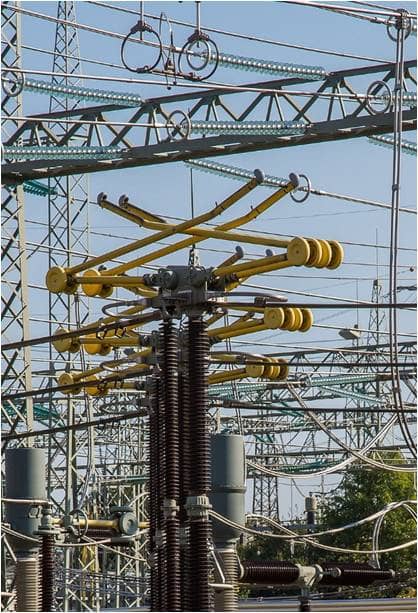Introduction
Of all disconnector types, the pantograph disconnector design is the most compact. The application of pantograph disconnectors is especially useful for providing connection between busbars arranged at two different vertical levels. Due to their compactness, electric trains also use the pantograph design to connect the train to high voltage overhead lines.

Pantograph Disconnector Switch Components
With a pantograph disconnector design, the equivalent current carrying live blade/arm is provided by a scissor-type arrangement consisting of four telescopic booms with moving contacts; the corresponding jaw is a stirrup-type fixture attached to the overhead line/bus. The pantograph mechanism is installed on the support insulator and transfers movement from the rotating insulator to the arms of the pantograph. The two scissor arms provide parallel electrical connections, rather than the single electrical connecting arms that other disconnector types use; this setup lowers circuit resistance.


Pantograph Disconnector Switch
A variation of the pantograph disconnecting switch is the semi-pantograph, also known as a vertical-reach type, which incorporates only one-half of the scissor arrangement.

Semi Pantograph Disconnector Components
.jpg)
Semi Pantograph Disconnector Switch (Courtesy of COELME)
Related Online Engineering Courses
Introduction to Electrical Switchgear
Electrical Substations Explained
Additional Resources
https://en.wikipedia.org/wiki/Disconnector
http://www.tekhar.com/Programma/Siemens/Commutacia/High_voltage/pdf_pict/leaflet_e.pdf
https://www.acrastyle.co.uk/what-are-disconnectors-used-for
